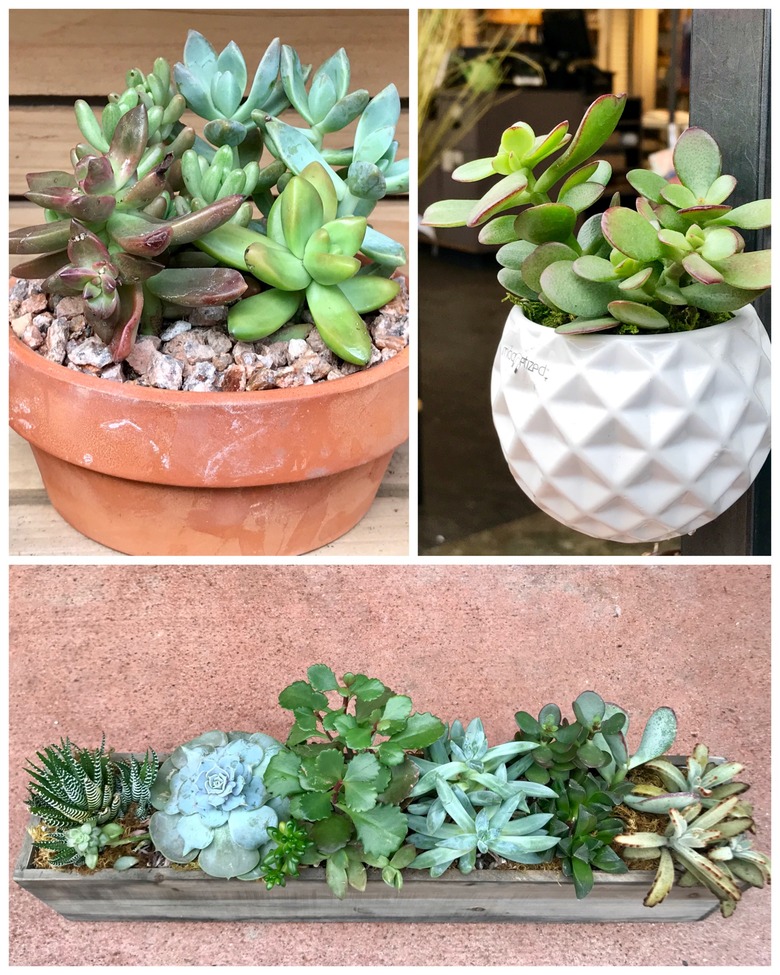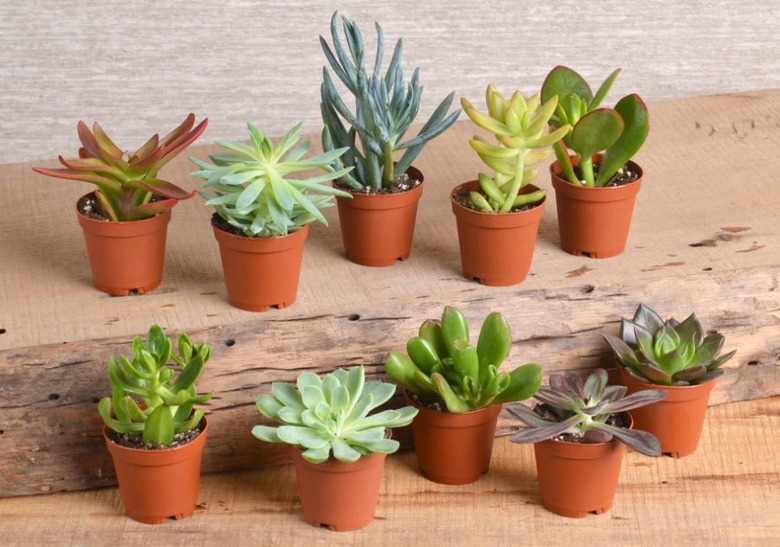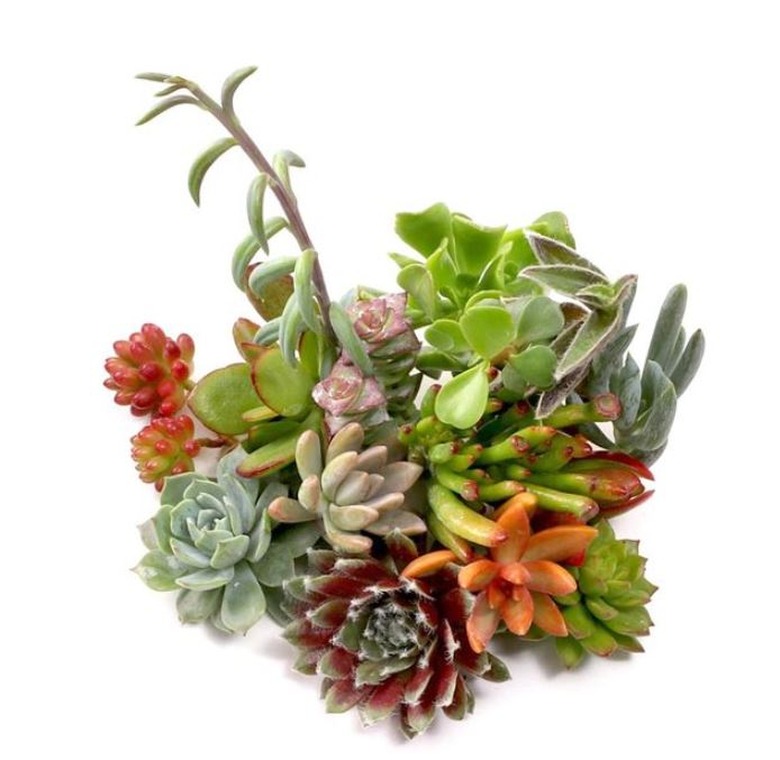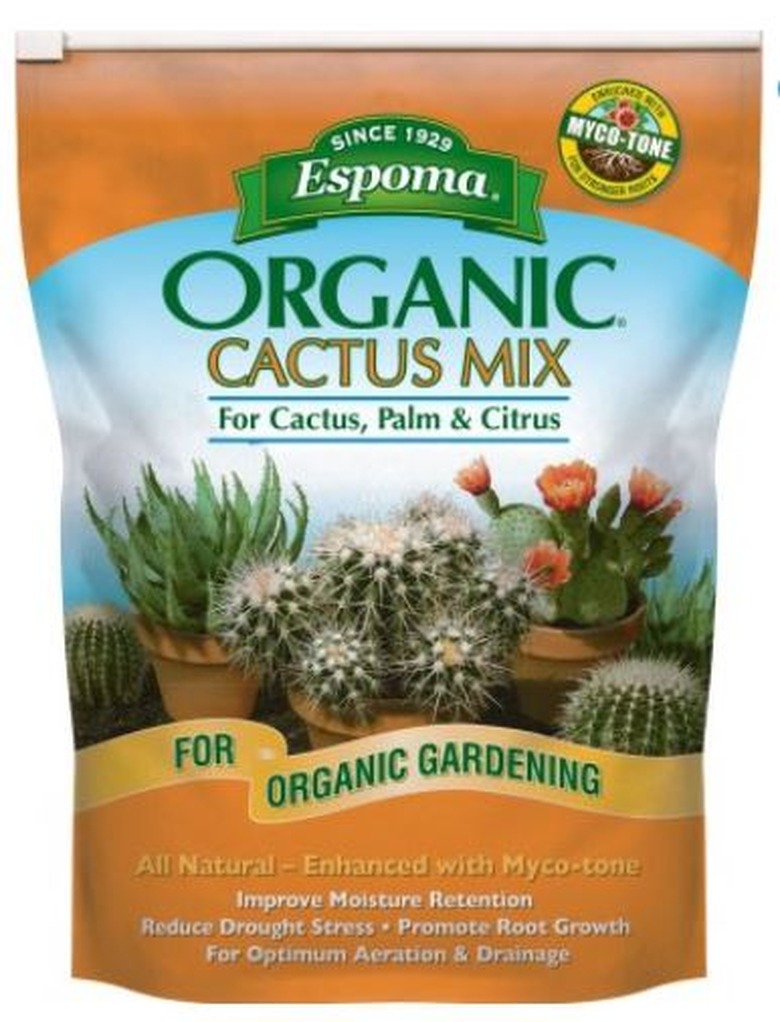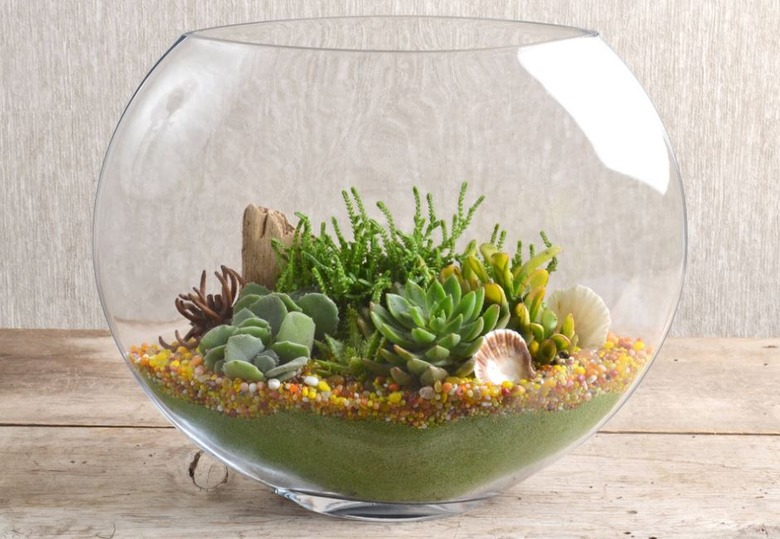How To Make A Succulent Garden
Succulent container gardens are popular because the modern, sculptural vibe of the plants look fantastic in a unique planter. Since succulents require minimal care, creating this kind of showpiece greenery can be a great project for someone who wants to add a touch of nature to their home or office.
Succulent means juicy, and a succulent plant is identified by its fleshy leaves, stems, and roots that store moisture. There are many different species of succulents, so you can easily find a variety of colors and forms to create an attractive and unique display. Keep in mind that cacti are a type of succulent that stores moisture in their stems and they're often included in a modern succulent garden, sometimes in combination with other types of succulents.
Things Needed
-
Planting container
-
Succulent plants (an odd number is most pleasing)
-
Cactus soil,or potting soil combined with coarse sand
-
Garden gloves (some plants are sharp)
-
Decorative pebbles
-
Water
1. Choosing Plants
Most garden centers display a variety of succulents together for their customers' convenience. In addition, containers and premixed soil are usually located nearby. Any container can work for a succulent garden, but they are often planted in broad, shallow pots. Some people prefer to choose a container first and then the plants to fill it. Others begin with the plants and then select an appropriately sized container.
For an indoor succulent garden, purchase "miniature" plants that are scaled for a smaller container. Although these plants will grow, it will be slower because they'll be planted closely together. Larger, more mature plants are better suited to outdoor pots and gardens.
As you make your selections, follow the popular container garden formula.
- Thriller: Choose one plant that's relatively tall, large, or dramatically different from the rest in some way. This is the plant everyone should notice first.
- Filler: The majority of your plants will be fillers: plants that add a variety of height, color, and texture to complement the thriller. A variety of heights and shapes will create a visual bridge from the tallest plant to the smaller plants.
- Spiller: These plants cover the edge of the pot and might even trail down the side.
As you select plants, consider color as well. In the case of a succulent container garden, this will be more about the color of the leaves, not the flower blooms.
- Some people prefer the serenity of a cool monochromatic mix in which all the plants are a shade of green with leaves providing textural interest. A variety of orange-colored succulents create a warm monochromatic scheme.
- An analogous mix adds neighboring colors on the color wheel, such as green/blue/purple or yellow/orange/red. The additional colors of an analogous color scheme add intrigue to your garden.
- A complementary color scheme pairs plant colors that are opposite on the color wheel and creates the most dramatic effect. Popular combinations are blue and orange, green and red, and yellow and purple. A complementary arrangement works well when you include a few plants that naturally combine the colors together, such as plant with green leaves tinged with red.
2. Prepare a Container
Select a container that will complement the room where you will display your succulent garden. First, consider how much space you have available on a tabletop or shelf. Then, from that subset, choose a broad, shallow piece that suits your decor. Whether you choose a clay pot, ceramic piece, glass terrarium, or wood trough, be sure there's a drainage hole. Succulents do not thrive in wet soil. If your container doesn't have a hole, either create a hole with a masonry drill bit and drill or place a layer of pebbles on the bottom of the container to allow excess water to drain away from the roots. In a planter without a drainage hole, you'll need to be very careful not to overwater. Containers without drainage holes are not well suited for outdoor use in climates that get regular rainfall, but they can work for indoor plantings where you can carefully control water.
3. Add Soil
You may either purchase a soil that's specially mixed for succulents or create your own blend. Whichever you choose, the growing medium needs to drain quickly and dry out between waterings so that roots will not rot. A good soil also provides nutrients to promote healthy plant life. To prepare soil yourself, mix one part garden soil or potting soil and one part coarse sand. Avoid potting soil that contains peat because peat holds moisture in the soil, which you don't want with a succulent container garden. Succulent soil blends are always quite sandy, with a minimal amount of organic material in them. Fill the pot almost full, leaving enough room to add the plants and a final layer of decorative pebbles.
4. Add Plants
Always choose an odd number of plants because this generally is more pleasing to the eye than the symmetry of planting in even numbers. Select one plant as the focal point—usually the largest or most colorful plant—and place this in or near the center of the container. Wearing gloves, remove the plant from the nursery pot and set it into the bowl. In similar fashion, place the remaining plants around the edges of the container. It's okay to place plants close together; allow about 1/2 inch of space between them. Fill in gaps with soil, pressing firmly. As an option, you can cover the top of the soil with a layer of pebbles as a design touch. You may also add a larger ornamental stone or shell as an accent.
5. Add Water
Water thoroughly until a small amount drips out of the drainage hole. If you're using a container without drainage holes, such as a glass terrarium bowl, watch the water level carefully and stop watering as soon as you notice it beginning to pool at the bottom. Don't allow the plant roots to sit in excess water, as this can kill succulent plants. Place the completed succulent garden in a sunny location and enjoy!
Basic Succulent Care
Basic Succulent Care
Succulents need a minimum of 5 to 6 hours of direct sunlight each day and an average indoor temperature between 65 and 80 F. Add water when the soil feels dry when you insert your fingertip all the way to the bottom of the soil layer. If you're wondering whether plants need water, gently squeeze a leaf—it should feel firm. If the leaves feels soft or squishy, the plant needs moisture. Fertilize plants with a succulent plant food during the spring and summer months.
